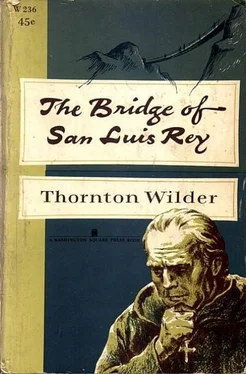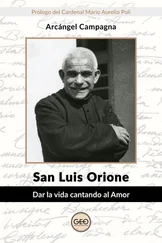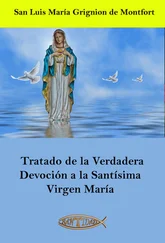Some say that we shall never know and that to the gods we are like the flies that the boys kill on a summer day, and some say, on the contrary, that the very sparrows do not lose a feather that has not been brushed away by the finger of God.
Part Two: The Marquesa De Montemayor
ANY Spanish schoolboy is required to know today more about Doña María, Marquesa de Montemayor, than Brother Juniper was to discover in years of research. Within a century of her death her letters had become one of the monuments of Spanish literature and her life and times have ever since been the object of long studies. But her biographers have erred in one direction as greatly as the Franciscan did in another; they have tried to invest her with a host of graces, to read back into her life and person some of the beauties that abound in her letters, whereas all real knowledge of this wonderful woman must proceed from the act of humiliating her and of divesting her of all beauties save one.
She was the daughter of a cloth-merchant who had acquired the money and the hatred of the Limeans within a stone’s-throw of the Plaza. Her childhood was unhappy: she was ugly; she stuttered; her mother persecuted her with sarcasms in an effort to arouse some social charms and forced her to go about the town in a veritable harness of jewels. She lived alone and she thought alone. Many suitors presented themselves, but as long as she could she fought against the convention of her time and was determined to remain single. There were hysterical scenes with her mother, recriminations, screams and slamming of doors. At last at twenty-six she found herself penned into marriage with a supercilious and ruined nobleman and the Cathedral of Lima fairly buzzed with the sneers of her guests. Still she lived alone and thought alone, and when an exquisite daughter was born to her she fastened upon her an idolatrous love. But little Clara took after her father; she was cold and intellectual. At the age of eight she was calmly correcting her mother’s speech and presently regarding her with astonishment and repulsion. The frightened mother became meek and obsequious but she could not prevent herself from persecuting Doña Clara with nervous attention and a fatiguing love. Again there were hysterical recriminations, screams and slamming of doors. From the offers of marriage that fell to her, Doña Clara deliberately chose the one that required her removal to Spain. So to Spain she went, to that land from which it takes six months to receive an answer to one’s letter. The leave-taking before so long a voyage became in Peru one of the formal services of the Church. The ship was blessed and as the space widened between the vessel and the beach both companies knelt and sang a hymn that never failed to sound weak and timid in all that open air. Doña Clara sailed with most admirable composure, leaving her mother to gaze after the bright ship, her hand pressing now her heart and now her mouth. Blurred and streaked became her view of the serene Pacific and the enormous clouds of pearl that hang forever motionless above it.
Left alone in Lima the Marquesa’s life grew more and more inward. She became increasingly negligent in her dress and like all lonely people she talked to herself audibly. All her existence lay in the burning center of her mind. On that stage were performed endless dialogues with her daughter, impossible reconciliations, scenes eternally recommenced of remorse and forgiveness. On the street you beheld an old woman her red wig fallen a little over one ear, her left cheek angry with a leprous affection, her right with a complementary adjustment of rouge. Her chin was never dry; her lips were never still. Lima was a city of eccentrics, but even there she became its jest as she drove through the streets or shuffled up the steps of its churches. She was thought to be continuously drunk. Worse things were said of her and petitions were afloat that she be locked up. She had been denounced three times before the Inquisition. It is not impossible that she might have been burned had her son-in-law been less influential in Spain and had she not somehow collected a few friends about the viceregal court who suffered her for her oddity and her wide reading.
The distressing character of the relations between mother and daughter were further embittered by misunderstandings over money. The Condesa received a handsome allowance from her mother and frequent gifts. Doña Clara soon became the outstanding woman of intelligence at the Spanish court. All the wealth of Peru would have been insufficient to maintain her in the grandiose style she fancied for herself. Strangely enough her extravagance proceeded from one of the best traits in her nature: she regarded her friends, her servants and all the interesting people in the capital, as her children. In fact there seemed only one person in the world towards whom she did not expend herself in kind offices. Among her protégés was the cartographer De Blasiis (whose Maps of the New World was dedicated to the Marquesa de Montemayor amid the roars of the courtiers at Lima who read that she was the “ admiration of her city and a rising sun in the West” ); another was the scientist Azuarius whose treatise on the laws of hydraulics was suppressed by the Inquisition as being too exciting. For a decade the Condesa literally sustained all the arts and sciences of Spain; it was not her fault that nothing memorable was produced in that time.
About four years after Doña Clara’s departure Doña María received her permission to visit Europe. On both sides the visit was anticipated with resolutions well nourished on self-reproach: the one to be patient, the other to be undemonstrative. Both failed. Each tortured the other and was on the point of losing her mind under the alternations of self-rebuke and the outbursts of passion. At length one day Doña María rose before dawn, daring no more than to kiss the door behind which her daughter was sleeping, took ship and returned to America. Henceforth letter-writing had to take the place of all the affection that could not be lived.
Hers were the letters that in an astonishing world have become the text-book of schoolboys and the ant-hill of the grammarians. Doña María would have invented her genius had she not been born with it, so necessary was it to her love that she attract the attention, perhaps the admiration, of her distant child. She forced herself to go out into society in order to cull its ridicules; she taught her eye to observe; she read the masterpieces of her language to discover its effects; she insinuated herself into the company of those who were celebrated for their conversation. Night after night in her baroque palace she wrote and rewrote the incredible pages, forcing from her despairing mind those miracles of wit and grace, those distilled chronicles of the viceregal court. We know now that her daughter barely glanced at the letters and that it is to the son-in-law that we owe their preservation.
The Marquesa would have been astonished to learn that her letters were immortal. Yet many critics have accused her of keeping one eye on posterity and point to a number of letters that have all the air of being bravura pieces. To them it seems impossible that Doña María should have put herself to the same pains to dazzle her daughter that most artists expend on dazzling the public. Like her son-in-law they misunderstood her; the Conde delighted in her letters, but he thought that when he had enjoyed the style he had extracted all their richness and intention, missing (as most readers do) the whole purport of literature, which is the notation of the heart. Style is but the faintly contemptible vessel in which the bitter liquid is recommended to the world. The Marquesa would even have been astonished to learn that her letters were very good, for such authors live always in the noble weather of their own minds and those productions which seem remarkable to us are little better than a day’s routine to them.
Читать дальше












